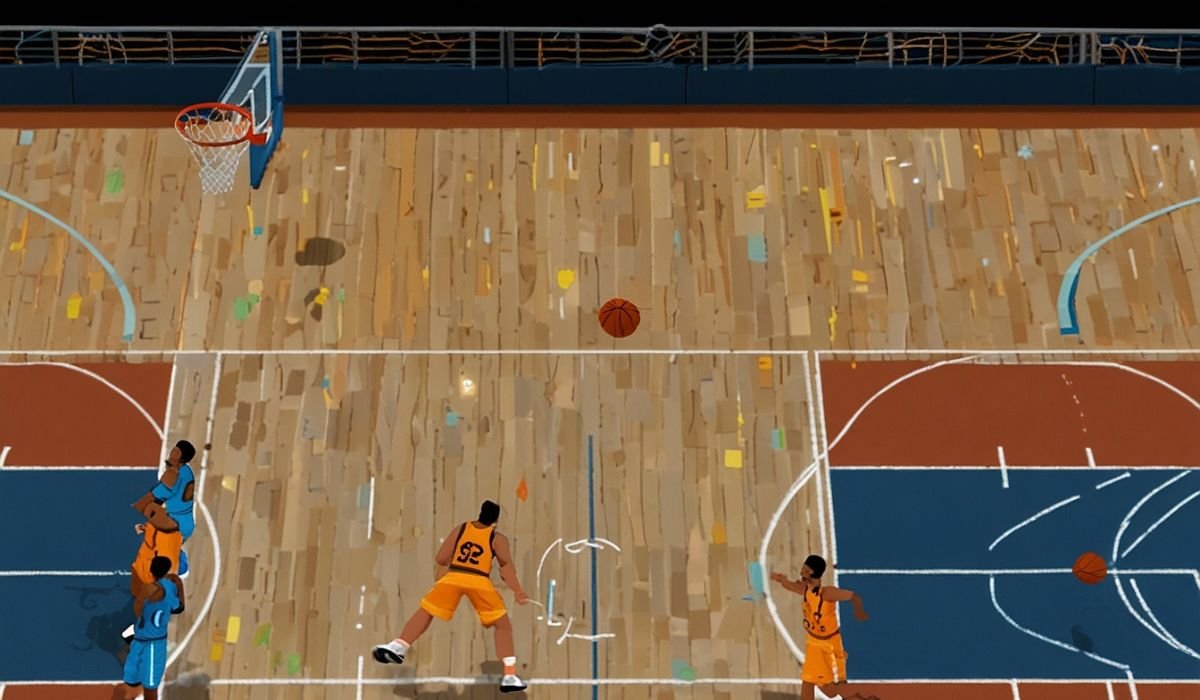Ever been in the zone on the court, feeling the perfect play unfold in your mind? For a developer, finding a brilliant “Basketball Stars” project on GitHub feels exactly like that. It’s that moment of inspiration where you see how the magic behind your favorite mobile game could be built, tweaked, and made your own.
But where do you even start? The world of Basketball Stars GitHub repositories can be as overwhelming as a full-court press. This friendly guide is your coach, breaking down everything from the basic layups to the advanced alley-oops of navigating these coding projects. We’ll explore what these projects are, how to find the good stuff, and how you can eventually slam-dunk your own contributions.
The Basics: What Exactly is a “Basketball Stars GitHub” Project?
Let’s get our fundamentals straight. When people search for Basketball Stars GitHub, they’re rarely looking for the official game’s secret code. Instead, they’re diving into the wonderful world of fan-made, inspired-by, and educational projects.
Think of GitHub as a massive, global library for code. Instead of borrowing books, developers “clone” repositories (repos)—which are just fancy folders containing code, images, and instructions. A Basketball Stars GitHub repo could be anything from:
- A simple 2D game built with Python and Pygame.
- A stats tracker that scrapes data from NBA websites.
- A physics simulation of a basketball’s arc.
- A full-blown, Unity-based 3D basketball game demo.
These projects are often labors of love, created by developers to learn new skills, showcase their talents, or just share their passion for basketball with the coding community.
Why Bother Exploring These Projects?
- Learn by Doing: There’s no better way to learn game development than by deconstructing a working game.
- Spark Ideas: Seeing how someone else solved a problem (like shot accuracy or player movement) can ignite your own project ideas.
- Build Your Portfolio: Contributing to an open-source project looks fantastic on a resume.
Your Playbook: How to Find the Best Repositories
Navigating GitHub can feel like trying to find a specific play in a thick playbook. Here’s a simple game plan to help you score.
1. Master the GitHub Search Bar
The search bar is your point guard. It sees the whole court. Be specific! Instead of just “basketball,” try:
- basketball game unity
- nba stats scraper python
- javascript basketball physics
- basketball-stars clone
2. Read the README.md File
The README.md file is the project’s announcement. A good one will tell you everything you need to know: what the project does, how to set it up, and how to contribute. If the README is empty or messy, the code might be too.
3. Check the Stars, Forks, and Last Update
These are your quick stats:
- Stars ⭐: Like likes on social media. More stars generally mean a more popular or respected project.
- Forks: The number of people who have copied the repo to their own account to work on it. High forks = high interest.
- Last Commit: This tells you when the code was last updated. A project last updated 5 years ago might be built with outdated technology.
The table below breaks down what these metrics can tell you:
| Metric | What It Tells You | A Good Sign Is… |
| Stars ⭐ | Popularity & Quality | A high number relative to similar projects |
| Forks | Community Engagement & Usability | Lots of forks, indicating it’s a useful base for others |
| Last Commit | Project Health & Maintenance | Recent activity (within the last year) |
Breaking Down the Code: Common Tech in Basketball Games
You don’t need to be a pro to appreciate the tech stack. Here’s a simple rundown of what you’ll often find.
- Python with Pygame: A fantastic starting point. Python is known for its simple syntax, and Pygame is a set of modules designed for writing video games. You’ll find many 2D, arcade-style basketball games here.
- JavaScript with HTML5 Canvas: This is how you build games that run directly in a web browser. It’s perfect for quick, interactive projects like free-throw simulators or dribbling games.
- Unity (C#): The heavyweight champion for 2D and 3D games. If you see a Basketball Stars GitHub project with slick 3D graphics and smooth animations, it’s almost certainly made with Unity. C# is the language used to write the game’s logic.
- Phaser.io: A very popular open-source framework for making HTML5 games. It’s a step up from raw Canvas and is a joy to work with for 2D games.
A Common Misconception: “I Can Just Copy-Paste and Publish My Own Game”
Hold up. This is a big one. While you can learn from and build upon open-source code, you cannot just take a clone of a game, reskin it, and put it on the App Store.
Most repos have licenses (like MIT or GPL) that dictate what you can and can’t do. More importantly, assets like sound effects, logos, and player likenesses are almost always copyrighted. The code might be open, but the branding isn’t. Use these projects as a learning tool and a foundation for your own original creation.
From Benchwarmer to MVP: How to Contribute
Feeling ready to get in the game? Contributing to an open-source project is a rite of passage for developers.
1. Start Small. Look for repos with issues tagged “good first issue” or “help wanted.” This is the coach calling you off the bench.
2. Fork and Clone. This is your personal copy of the code. You can mess around with it without affecting the main project.
3. Make Your Change. Fix a typo in the documentation, squash a small bug, or add a minor feature.
4. Submit a Pull Request (PR). This is you passing the ball back to the main team, suggesting they incorporate your changes. You’re saying, “Hey, I think this play improvement works.”
5 Practical Tips for Your Basketball Coding Journey
Ready to take your first shot? Here’s your pre-game routine.
- Start with a “Foul Shot” Simulator: It’s a simple, self-contained project that teaches you about user input, physics, and scoring.
- Read the Code, Don’t Just Run It: Try to understand why the developer wrote a function a certain way. This is where the real learning happens.
- Join a Community: Discord servers and subreddits for Pygame, Unity, or JavaScript are full of people who can help when you’re stuck.
- Don’t Be Afraid to Break Things: Clone a repo and start changing variables. What happens if you increase gravity? What if the ball is bouncier? Experiment!
- Celebrate Small Wins: Getting a sprite to move across the screen is a victory. Making a net swish is a championship moment. Acknowledge your progress.
The world of Basketball Stars GitHub projects is a testament to the creativity at the intersection of sports and technology. It’s a playground for developers to experiment, learn, and share their love for the game. So, what are you waiting for? Get out there, find a project that excites you, and start coding your own court vision.
What’s the coolest sports-related coding project you’ve ever seen? Share your finds and let’s build a community of baller-developers!
FAQs
1. Is the official “Basketball Stars” game by Miniclip open-source on GitHub?
No, it is not. The official game is a proprietary, commercial product. The projects you find on GitHub are fan-made, educational, or inspired by such games, created by independent developers.
2. I’m a complete beginner. What’s the easiest type of basketball game to code?
A text-based or very simple 2D game is your best bet. A “Foul Shot” simulator where you press a button for power and another for accuracy, using Python or JavaScript, is a perfect first project.
3. What programming language should I learn to make a basketball game?
For beginners, Python with Pygame is highly recommended for its simplicity. For more advanced, web-based games, learn JavaScript. For high-quality 2D/3D games, C# with Unity is the industry standard.
4. Can I use NBA team names and logos in my GitHub project?
Generally, no. NBA trademarks are strictly protected. Using them in a public project, even if it’s free, can lead to a takedown notice. It’s best to create your own original team names and logos.
5. How do I add realistic physics to my basketball game?
Most game engines have built-in physics systems. In Unity, you’d use its Rigidbody component. In JavaScript, you might use a library like Matter.js. Start with simple concepts like gravity and collision detection before moving to advanced arc and bounce.
6. What does “clone a repo” mean?
“Cloning” is just making a full copy of a GitHub repository onto your local computer so you can run and edit the code yourself. It’s like downloading the entire project folder.
7. I found a bug in a project I like. What should I do?
That’s a great opportunity to contribute! Go to the “Issues” tab on the GitHub repository page and create a new issue. Describe the bug clearly, including steps to reproduce it. The project maintainer will appreciate it!
You may also like: The Zuyomernon System Basketball: Revolutionizing the Modern Game










